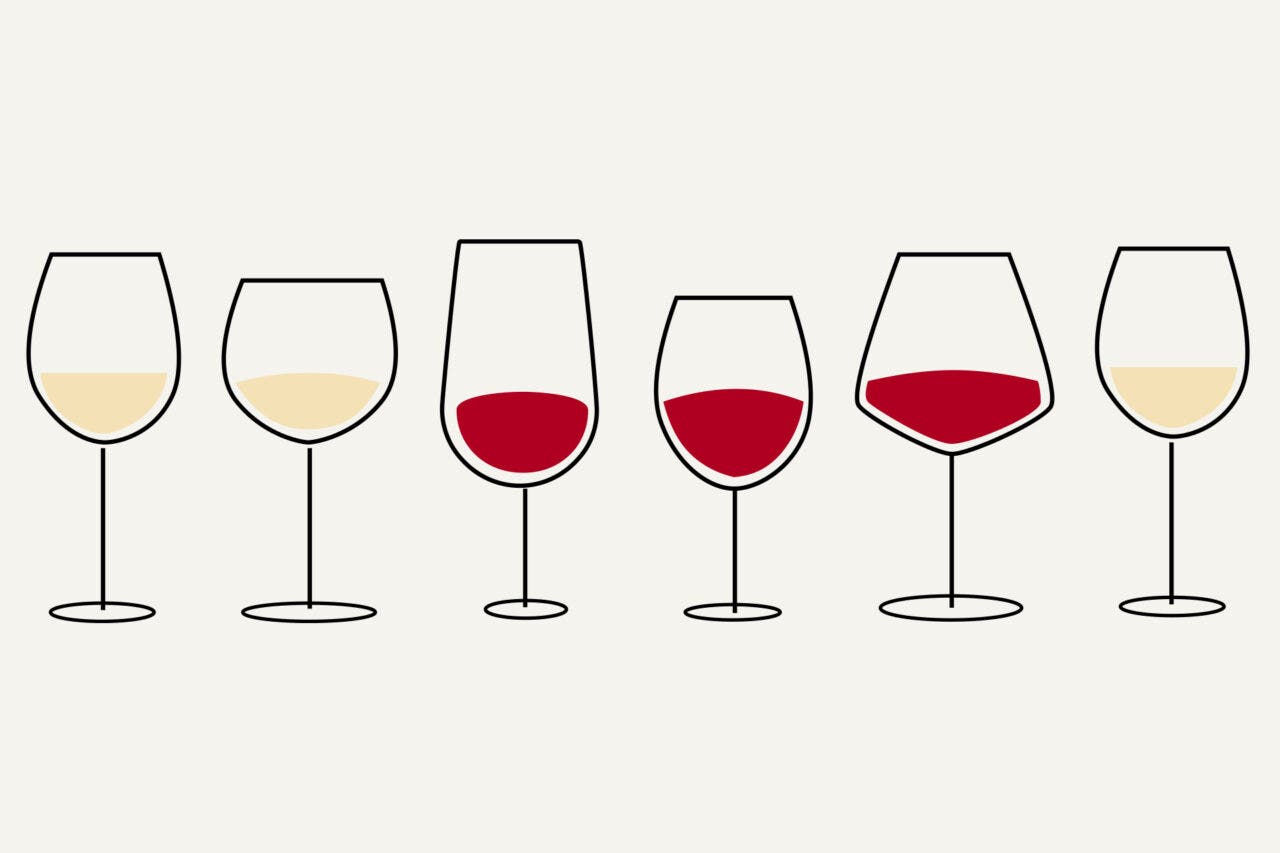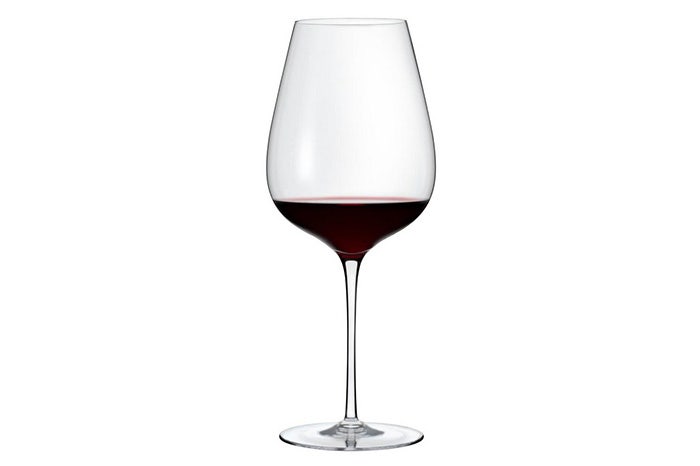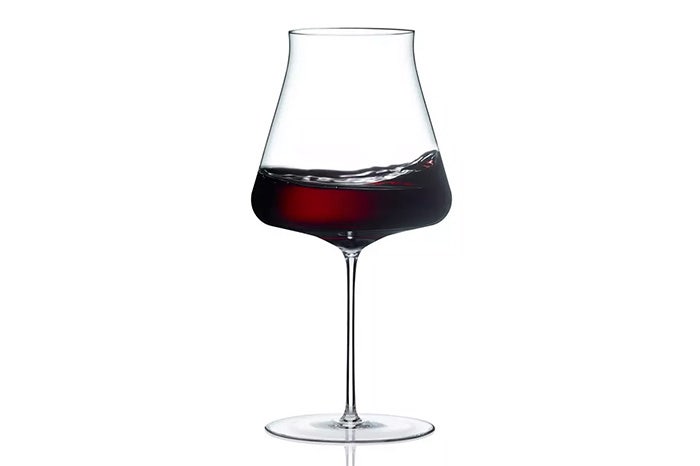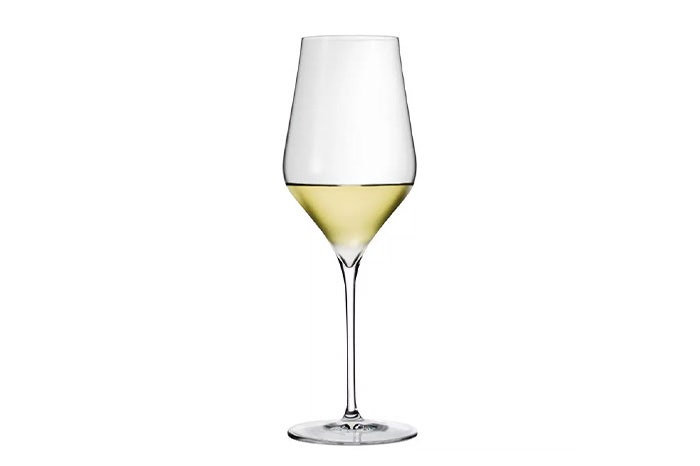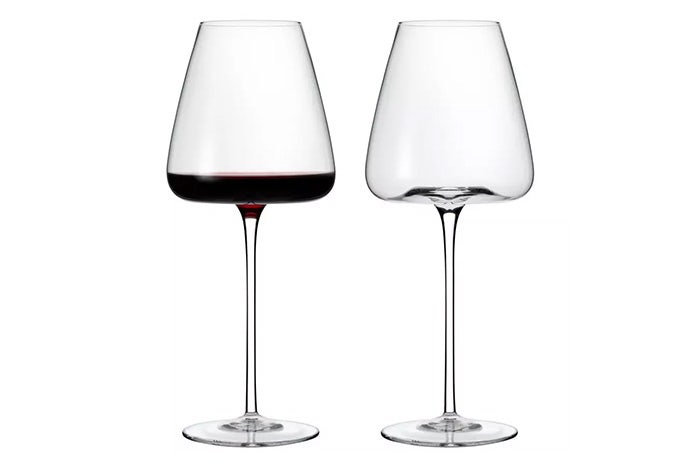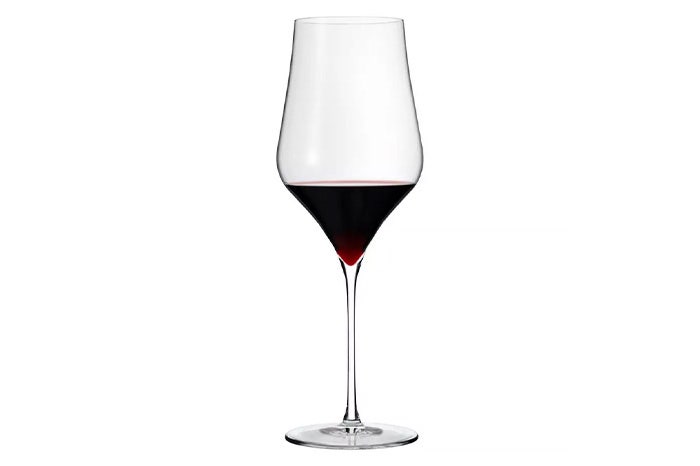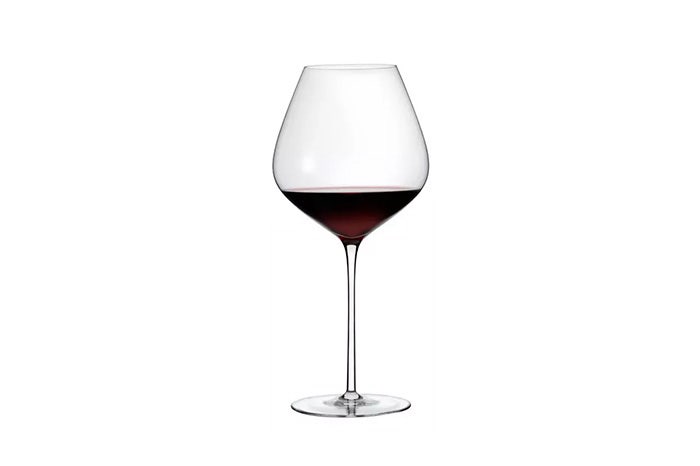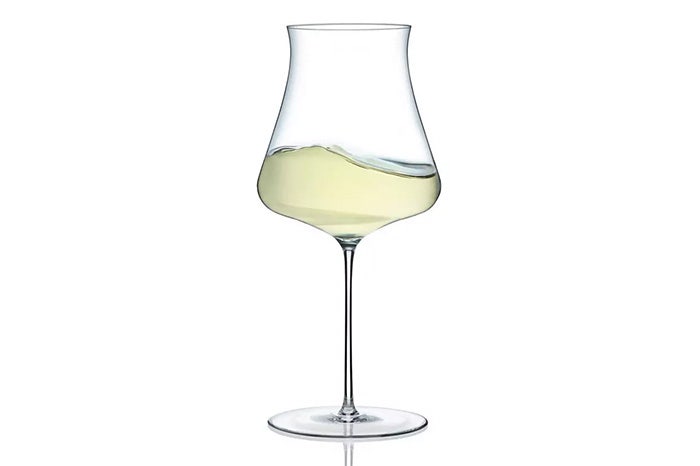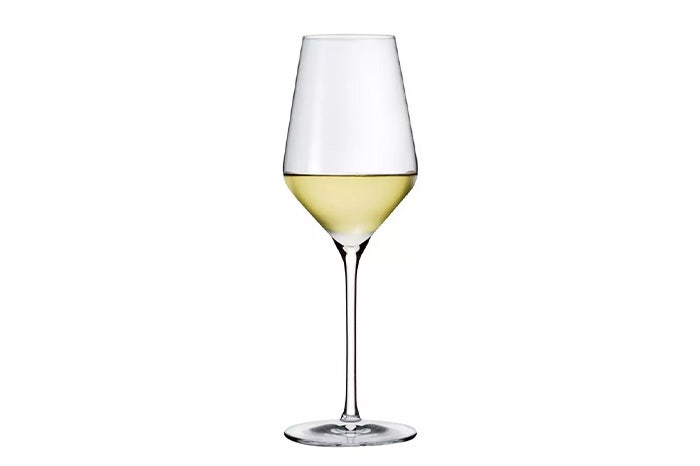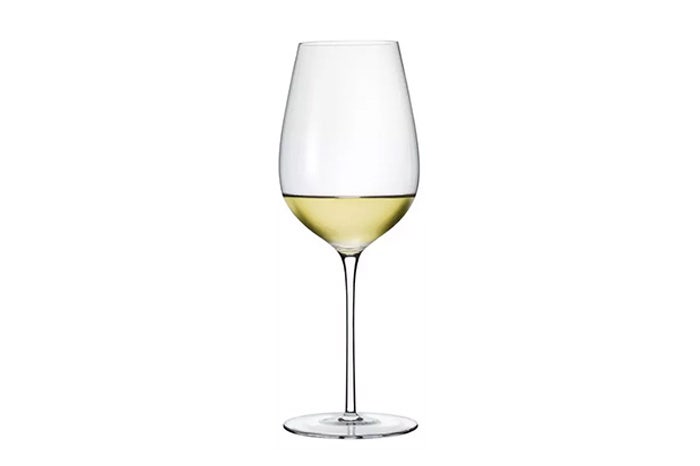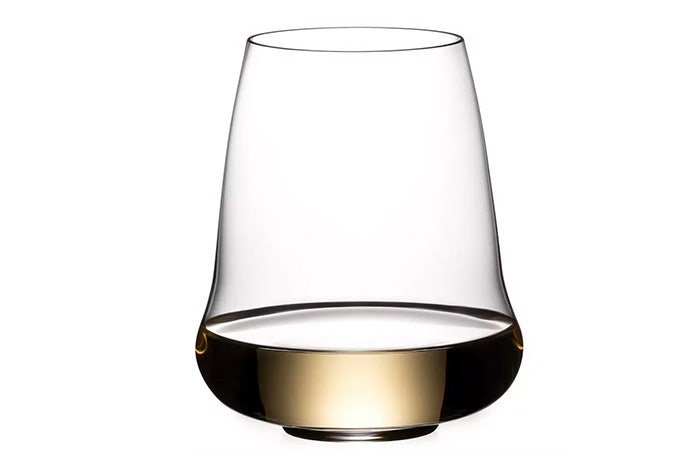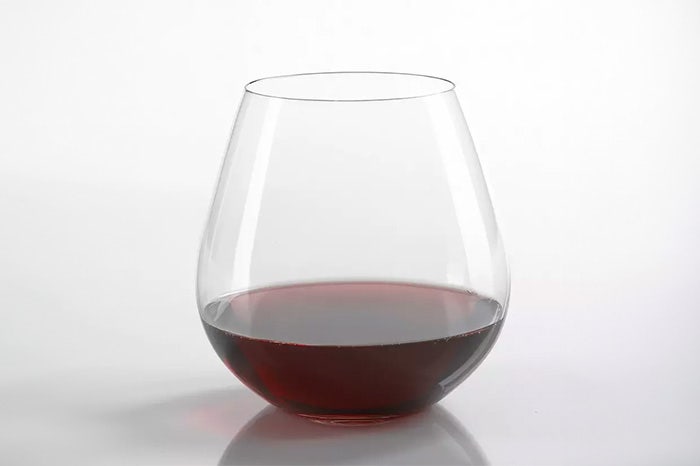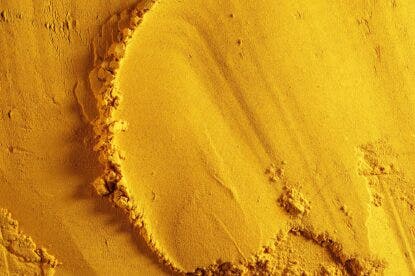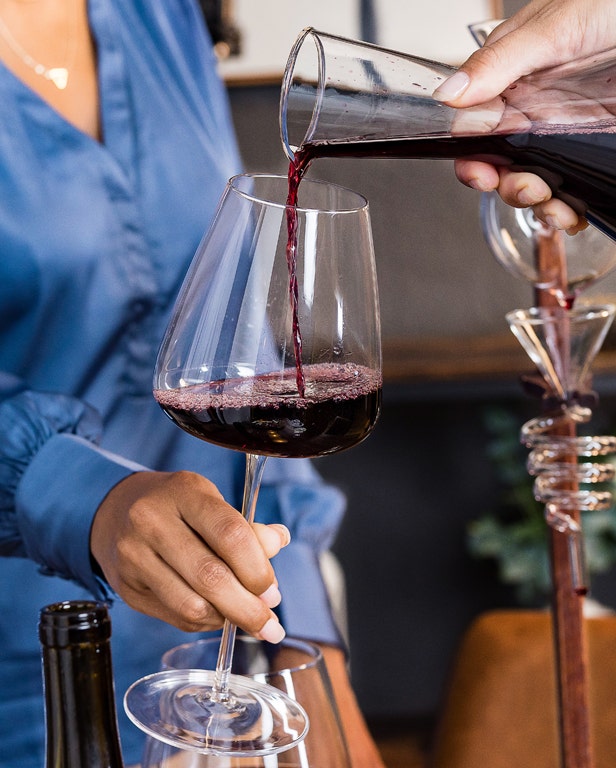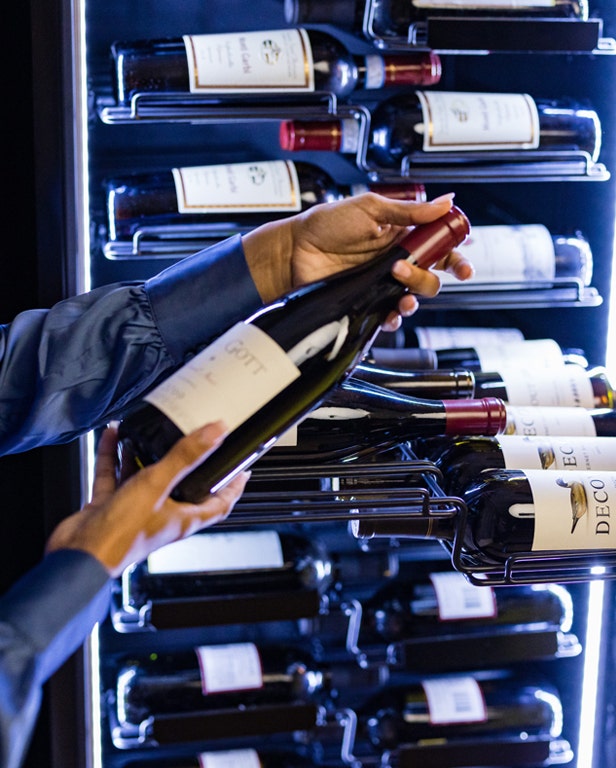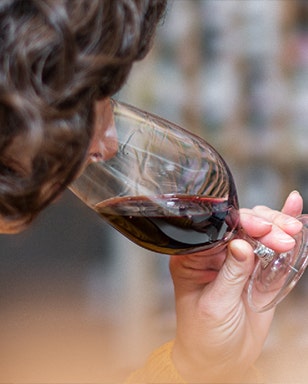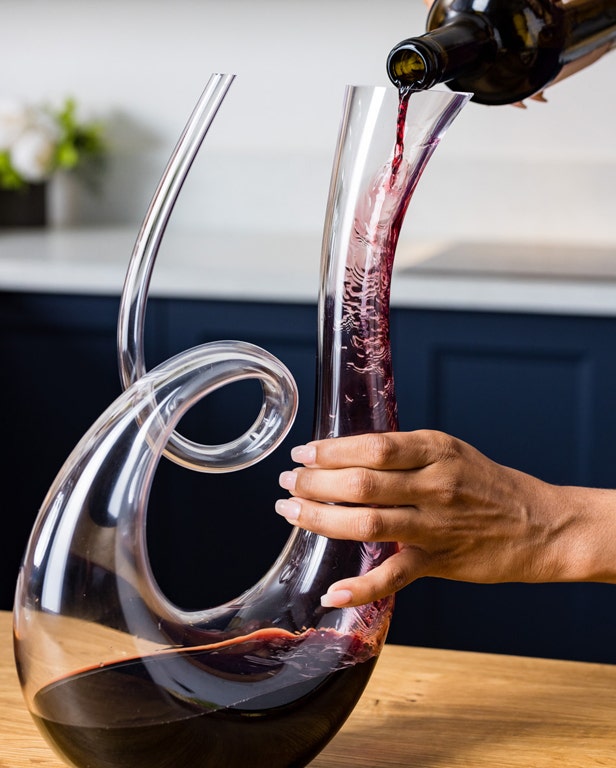Red wine glasses and white wine glasses differ in shape and size, dependent on the type of wine they’re intended to hold. Red wine glasses are typically taller and have a larger bowl than white wine glasses. As reds are generally bigger and bolder wines, they require a larger glass to allow all those aromas and flavors to emerge.
Here, we’ll get into the various nuances between red and white glass types.
- General differences of red vs. white wine glasses
- The three types of red wine glasses
- The two types of white wine glasses
- Red vs. white stemless glasses
Before we get started…
In this article you will learn all about different glass shapes for different types of wines. In general, there are three main red wine glasses and two main white wine glasses.
If you came here looking for a more general recommendation for one white wine glass and one red wine glass that covers most of your bases, these are our expert-suggested and most popular:
You May Also Like: Our Best Wine Glasses of 2023, According to Pros and Reviews
Red vs. White Wine Glasses
Key Differences:
Generally speaking, white wine glasses have smaller bowls than red wine glasses. The walls of a white wine glass bowl will also be less curved. White wine glasses have much narrower openings than red wine glasses.
Affect on the Senses:
Because red wines are generally more full-bodied than whites, red wine glasses benefit from having larger bowls. The larger, more roundly-shaped bowls allow more air to interact with the wine. This will allow the flavors to open up and display themselves more prominently. A white wine doesn’t need as much aeration.
The larger bowls of red wine glasses also let the wine’s aromatic qualities display more robustly. Much like a decanter, red wine glasses are built to “open up” the wine’s aromas. White wine glasses have shorter bowls. This allows the drinker to bring the wine closer to their nose, which is helpful for more subtly aromatic white wines.
Red wine glasses create a more visible surface area, which can make it easier to see the wine’s viscosity and color as it is swirled in the glass.
Stem Length:
One of the main distinctions between red and white wine glasses is the length of the stem. Most white wine glasses have longer stems than red wine glasses, allowing the drinker greater distance between their hand and their beverage. The reason for this? White wines are more temperature-sensitized and need to be served below room temperature. A longer stem allows the drinker to distance their hand from the bowl, preventing any warming of the wine from body heat.
The feet of white wine glasses and red wine glasses are very similar in size and shape.
The 3 Types of Red Wine Glasses
Red wine glasses will usually have a larger bowl than white wine glasses. This allows the bolder, fuller flavors of red wines to “breathe”. By giving the wine enough room to take in oxygen in the glass, the wine will open up and display both aromatic and flavor qualities more easily. The rims of red wine glasses are wider for the same reason. Some red wine glasses may even have tulip-shaped rims to invite more air into the glass.
There are essentially three main categories of red wine glasses: full-bodied (or Bordeaux), medium-bodied, and light-bodied (or Burgundy).

Cabernet Sauvignon/Bordeaux glass
Cabernet Sauvignon/Bordeaux glasses are the largest of the three types. The size of these glasses creates a large amount of space between your nose and the wine. This lets ethanol vapors move past your nose, which allows you to experience more of the wine’s aromatic compounds and less of the strong alcohol vapors. The larger opening will also let the wine flow onto the entire surface of your palate. This results in a more robust and comprehensive tasting experience. High-alcohol and high-tannin wines like Petit Sirah are well-suited to Cabernet Sauvignon/Bordeaux glasses.
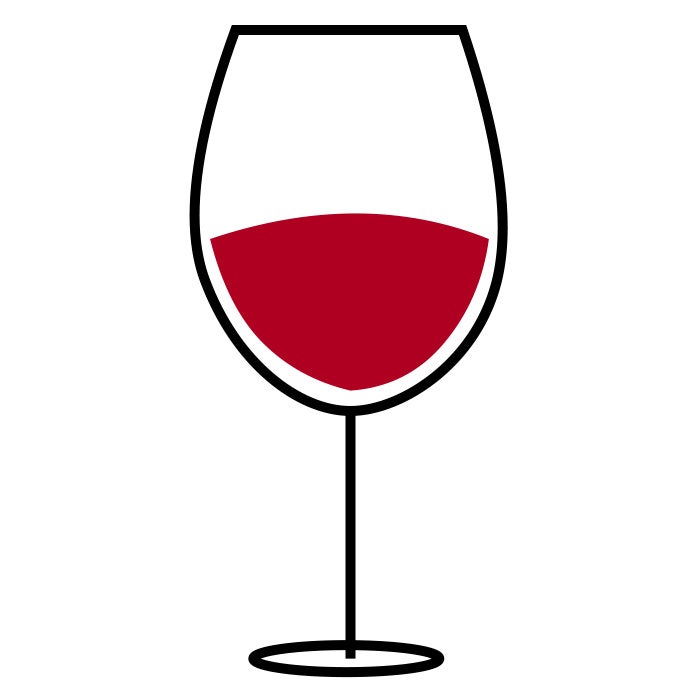
Medium-bodied glass
Medium-bodied glasses are smaller than Cabernet Sauvignon/Bordeaux glasses. They will soften some flavors and will keep a little more of the ethanol vapors in the glass. We suggest these medium-sized glasses with lighter-alcohol, old world wines such as Chianti and Rhône that have pronounced savory characteristics.
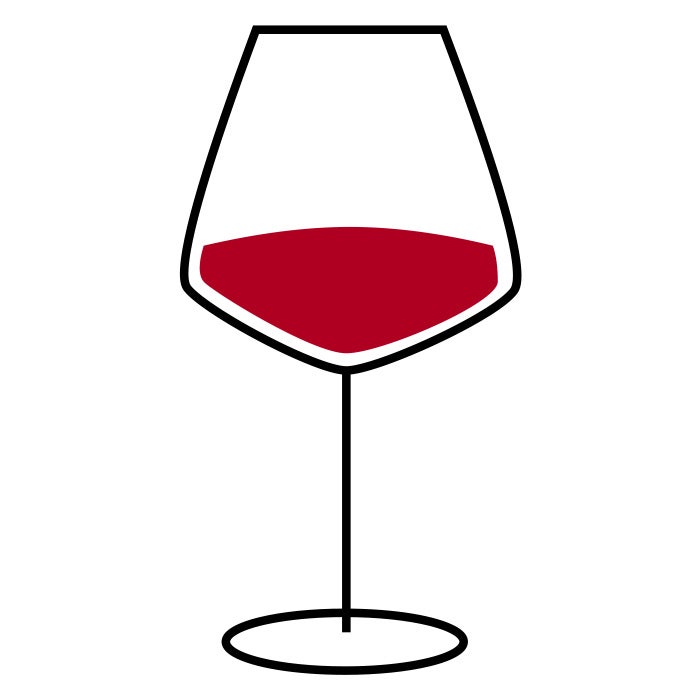
Pinot Noir/Burgundy glass
Pinot Noir/Burgundy glasses work well with lighter, more delicate reds. The space of the bowl allows the aroma to accumulate. The shorter lip also encourages the wine to run over the tip of the palate. This can enhance the sweetness of the wine. Some drinkers even enjoy Champagne or full-bodied white wines from Pinot Noir/Burgundy glasses.
Trending Red Wine Glasses
You May Also Like: How to Hold a Wine Glass Properly, and Why It Matters
The 2 Types of White Wine Glasses
White wine does not need as much space to breathe as red wine. White wines often need a smaller glass to preserve their delicate and subtle aromas. These tighter, narrower-bowled glasses concentrate and preserve the wine’s qualities.
You will also find that white wine glasses have shorter bowls. This allows the drinker to bring their nose closer to the wine to better experience its aromatic qualities. White wine glasses will also have longer stems than red wine glasses. This is because white wine is typically served at a lower temperature, and your hand can warm the wine if it is too close to the bowl of the glass. To mitigate this, white wine glasses’ long stems allow the drinker to keep their hand farther from the bowl.
There are two types of white wine glasses: those for high-acid wines and those for full-bodied wines. These two types of glasses will have differently-shaped bowls that accommodate the characteristics of certain wines.
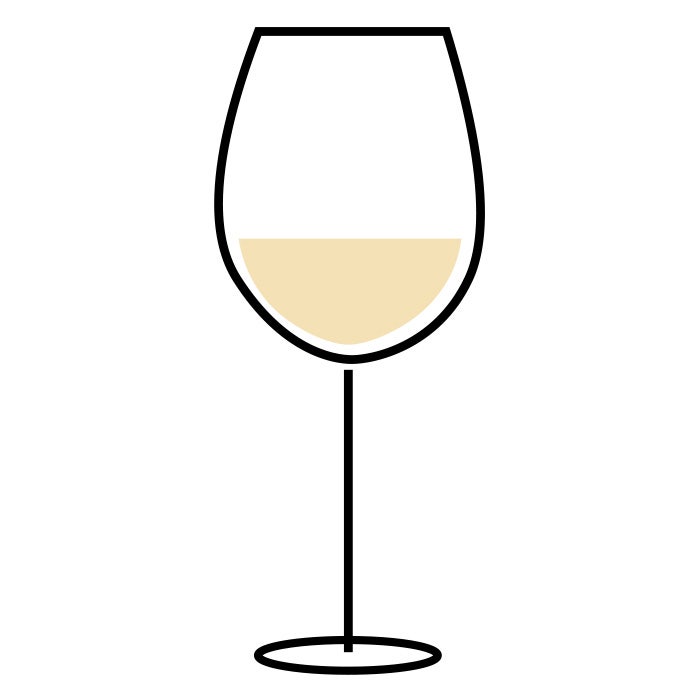
Glasses for High-Acid Wine
Glasses for high-acid wines are the smaller of the two. Their design allows the wine to move onto the middle of the palate, which brings out the wines’ acidic qualities. These types of wines usually have a lower alcohol percentage, so the ethanol vapors will not be much of a concern. Dry Rieslings, Sauvignon Blanc, and rosé are all popular wines for this style of glass.
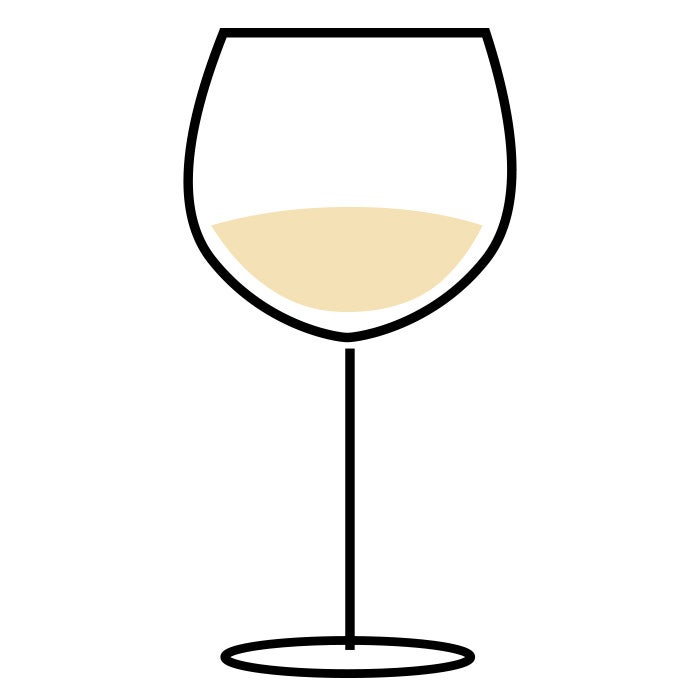
Glasses for Full-Bodied Wines
Glasses for full-bodied wines are larger with wider openings (though still narrower than most red wine glasses). This allows the alcohol vapors to flow past the nose while accentuating the richer qualities of full-bodied whites like Chardonnays.
Trending White Wine Glasses
Red vs. White Stemless Glasses
When it comes to stemless red and white glasses, most of the same qualities are present as in their stemmed counterparts. Stemless white glasses are smaller and narrower, while stemless red glasses have the traditional large, open bowl shape.
Red wines are more suited to stemless glasses because they are best served at 54-65°F. This means the warmth from your hand is less likely to impact the flavor and characteristics while in the glass.
Trending Stemless Wine Glasses
You May Also Like: Are Stemless Wine Glasses Any Good? We Investigate
Do I Need Both Wine Glass Types?
While you can certainly get by with one set of glasses, if you expect to drink a number of different varietals, you may find that the glassware is holding back your experience—particularly if you opt to drink red wine out of a smaller white wine glass. Does that mean you won’t enjoy your wine? Most definitely not. But, a proper varietal-glass pairing can make a difference in your experience.
Published: December 1, 2023




